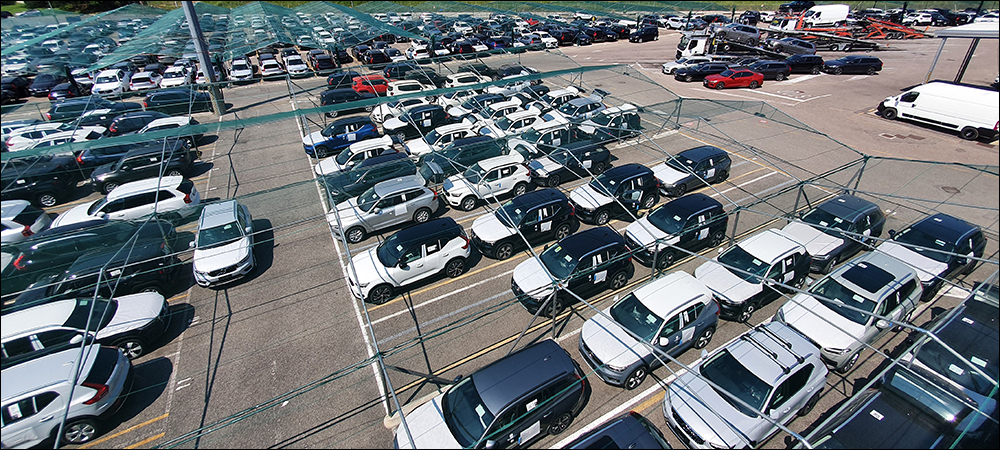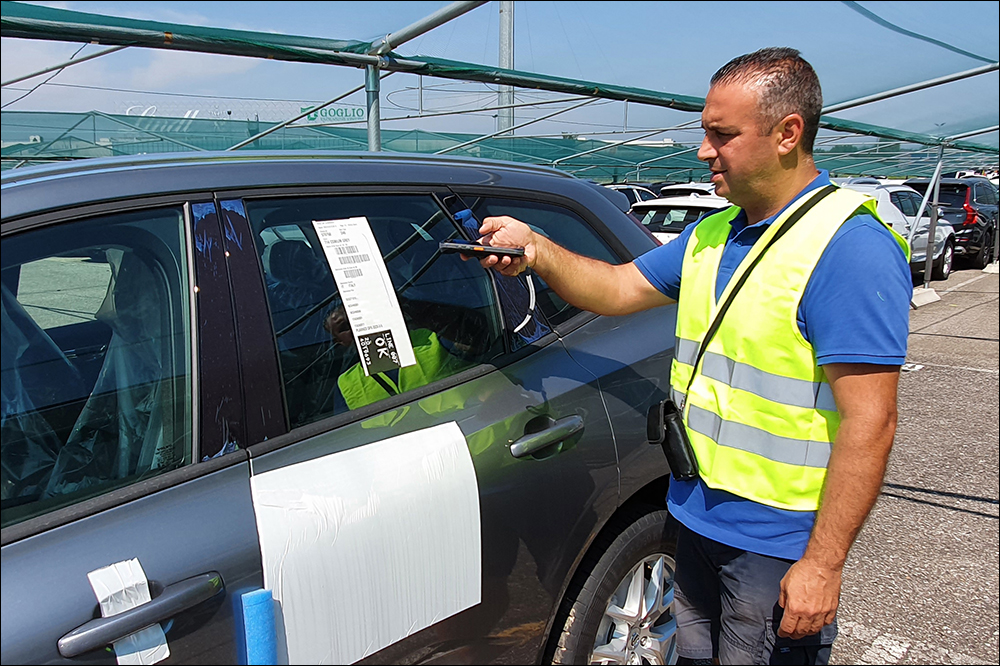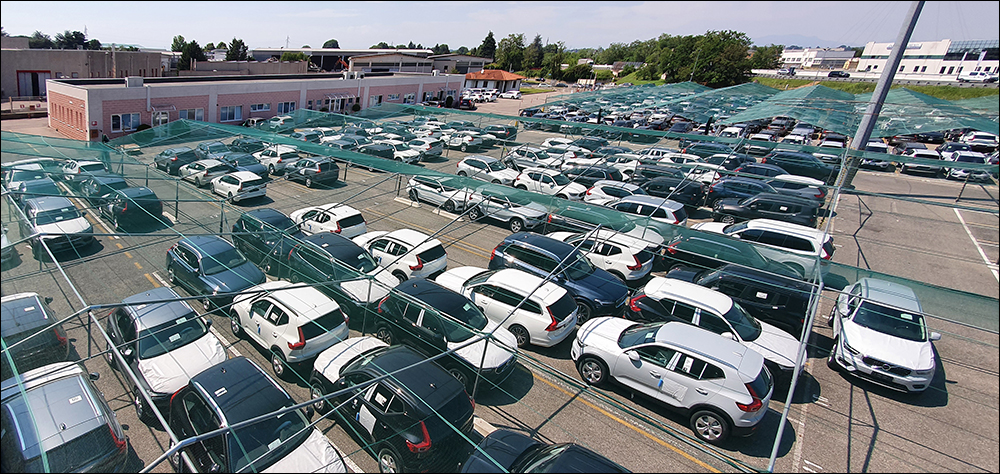Jul 22, 2020Vehicle importer Saturno Trasporti operates a busy logistics yard in northern Italy, where hundreds of cars move from one site to another daily in preparation for their shipment to dealerships. Last year, the company deployed an RFID-based solution from Italian technology company TechSigno. Since then, Saturno reports that it has improved its efficiency. The company now moves vehicles faster through processing and on to sellers, while its personnel spend less time searching for cars in its lot.
The solution consists of an app and cloud-based software provided by TechSigno and Confidex's ruggedized RFID tags. Scanning or reading the tags links each vehicle to a specific parking spot. The company has deployed the system at three satellite locations as well, using QR codes rather than RFID.

Saturno manages new, finished vehicles received from manufacturers and transports them to dealerships or buyers. It operates a fleet of approximately 200 trucks that transport new cars around the European Union, and it also transports vehicles by rail. Its clients include Volvo, Ford, Volkswagen, Fiat Chrysler Automobiles (FCA) and Daimler.
Before vehicles are sent to dealerships, they are serviced at Saturno's logistics center, located 35 kilometers (22 miles) north of Milan, in the municipality of Cassano Magnago. There, as many as 3,000 vehicles may be onsite at any given time, many of which undergo washing, tire changes or other services before being shipped. Typically, the company forwards about 600 vehicles per day or 100,000 annually. Cars are stored at its main facility, which measures 60,000 square meters, as well as at three satellite rented spaces.
Traditionally, the locations of vehicles have been traced manually, says Andrea Meneghini, Saturno's chief financial officer. Each time a car was moved, operators in the yard manually wrote the last six digits of its VIN on a paper ticket, along with the zone and space number of its parking spot. Several times per day, the workers brought paper tickets to the office personnel, who would then input the new data.
"The big problem was the human factor," Meneghini says. There was the potential for error, and this could have time-consuming consequences, he says, "because it took time to locate the vehicle." One example, says Loredana Lofrano, Saturno's key account manager, is an error in inputting the zone for a car's parking space. With 3,000 vehicles on the premises that look very similar, seeking a specific VIN could take minutes or hours. "Before the new system," she states, "we didn't have real-time positions of the vehicles."
TechSigno offers an intelligent parking solution that consists of its cloud-based software, handheld devices that serve as both a barcode scanner and a UHF RFID reader, and passive UHF RFID tags. The firm began working with Saturno in 2018. For Saturno, the challenge was to find a consistent method for linking a specific car to a particular parking space without requiring a large infrastructure installation, and with limited efforts by personnel. "We wanted to reduce, as much as we can, the human factor," Lofrano says.

Because each vehicle already comes with a printed sheet of paper with barcodes, the vehicle-management company wanted to leverage that information rather than add another RFID tag (or some other tag) to each car. Saturno and TechSigno opted to develop the system to use the existing barcode information on the vehicle's paperwork provided by the manufacturer. Since there are several barcodes on this paperwork, TechSigno designed the software to only recognize one specific barcode on each sheet, so as to prevent the wrong barcodes from being scanned.
TechSigno worked with Confidex to identify a UHF RFID tag robust enough that it could be driven over, and that could sustain extreme weather conditions, since the tags are exposed to weather all year-round, with cars, vans and trucks frequently driving over them. The companies selected Confidex's UHF Ironside Classic tag, a pressure-resistant tag that is screwed into the asphalt at each parking space, next to the space's stenciled number.
The Ironside tag was designed to be rugged and offer an IP68 rating, and to be mounted on metallic or other challenging surfaces via screws, rivets or industrial adhesive. It comes with a read range of 3 to 4 meters (9.8 to 13.1 feet) off-metal, and the solution was designed so that a tag can be read when an individual is standing at a parking space, without stray reads being captured from the tags on neighboring spaces. TechSigno chose an Android-based UHF RFID reader terminal from Chainway Information Technology capable of reading RFID and 2D barcodes, with a built-in camera to photograph license plates or document any issues with a vehicle. Data is sent to the back-end system via the company's Wi-Fi network.
Upon beginning a shift, an operator scans a QR code on his or her badge using the handheld Chainway device. That associates the device with the specific operator, Lofrano says. Then, each time that worker receives or moves a new vehicle in the lot, he or she can use the handheld to scan the barcode on the vehicle's paperwork, then read the UHF RFID tag installed at that parking space. If the employee notes any exceptions or needs to provide additional data about a car and its condition, he or she can input that information or take a picture using the handheld.
The device forwards the data via a Wi-Fi connection to the server-based software, which displays the vehicle's location, along with who placed it there and when this occurred. With that information, office personnel or operators can view each car's location when it needs to be accessed. The information can be frequently updated as vehicles move through servicing. "They can move the tags 10 times a day," Lofrano says, "and we can check in real time to see if everything is okay in the plant. This is useful, because you have the real situation with the real position."

In addition, the company operates three external sites for storing excess vehicles. Since these are rental locations, the firm was unable to install RFID tags at each parking space. Therefore, as an alternative, it affixed QR codes at each space, which can be scanned, along with the vehicle's barcode, in order to create its connection in the software.
TechSigno developed the software onsite for use with the app to put location data in the hands of operators walking around the yard with a mobile device, according to Luca Defend, TechSigno's business-development manager. The company's software filters data to ensure that only the closest tag ID is captured and stored, thereby preventing stray reads. Since the system was taken live last summer, Lofrano reports, the company has yet to lose track of a vehicle's position. This has resulted in less time that workers physically waste searching for the space where a particular car was last parked. The system has also helped to reduce labor time for office personnel and operators, she adds.
With regard to the tags used at the Saturno site, the Ironside family is optimized for metallic returnable transit items and industrial assets that face varying weather conditions and rough handling, according to Paul Broekhuizen, Confidex Smart Industries' executive VP. The tags' thermoplastic rubber surface material, he adds, "ensures that mechanical hits are not leaving a mark on the tag."

